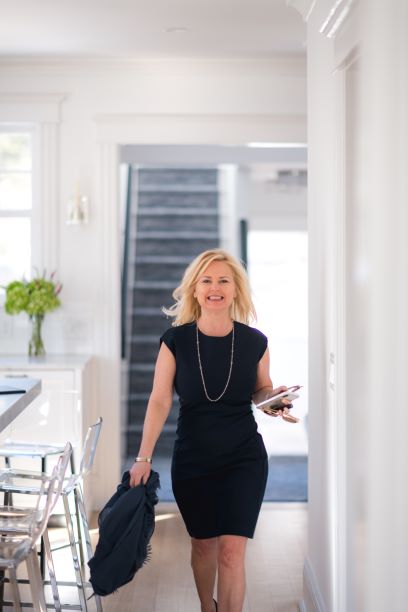 As co-owners of The Open House, Michele Green, interior designer, and Barbara Sperling, manager, deal with design dilemmas on a daily basis.
As co-owners of The Open House, Michele Green, interior designer, and Barbara Sperling, manager, deal with design dilemmas on a daily basis.
By Michele Green and Barbara Sperling
As co-owners of The Open House, Michele Green, interior designer, and Barbara Sperling, manager, deal with design dilemmas on a daily basis. In their new home design column, they’ll share some of their rules and break a few.
 Here are 12 basic “House Rules” to guide you, inspire you, and help you avoid the most common mistakes when designing your own home.
Here are 12 basic “House Rules” to guide you, inspire you, and help you avoid the most common mistakes when designing your own home.
1. DO begin with a neutral foundation. Ensure that the largest pieces in the room, such as the sofa, have classic lines and are upholstered in neutral fabrics. This will give your room longevity and make it easier to change the overall look in the future by swapping out smaller pieces or accessories.
2. DON’T choose wall colors from a paint swatch. Sample colors on your walls and consider them throughout different times of the day, as the color will change. The color should be as appealing to you in the morning as it is in the evening.
3. DO put all lights on a dimmer switch. Make sure to have a mix of overhead lighting as well as table lamps or adjustable-height floor lamps to be able to give the room an intimate feel. Adjusting light can alter the feel of any room and add instant ambiance.
4. DON’T fall for trendy. Trends come and go and you want to make sure your most significant pieces will stand the test of time. Limit trendy splurges to accessories or throw pillows, which can easily be switched out once you tire of the look.
5. DO make sure that area rugs extend under all the key pieces of furniture in a room. If this isn’t possible, it’s okay to have the front legs of major upholstered pieces on the rug and the back legs off. In a dining room, the rug should be large enough that when the chairs are pulled out from the table they are still on the rug.
6. DON’T hang art too high. The center point of either a picture or grouping of works should be at eye level or 60” above the floor.
7. DO make sure draperies at least skim the floor. It’s okay if they are longer and puddle a bit, but they should never be shorter. Draperies that are too short have the same effect as pants that are too short – awkward.
 8. DON’T be concerned about matching colors – think of blending rather than “matching”. Concentrate on pulling together different hues of the same tone rather than finding an exact match – this will create a more sophisticated look.
8. DON’T be concerned about matching colors – think of blending rather than “matching”. Concentrate on pulling together different hues of the same tone rather than finding an exact match – this will create a more sophisticated look.
9. DO identify or create a focal point in the room when considering furniture arrangement. Focal points can be a window, fireplace, or special piece of furniture.
10. DON’T use matched sets of furniture – it creates an overall look that is boring and contrived. Rather, find pieces that compliment each other.
11. DO group similar small objects together when displaying a collection. Doing so gives the objects more importance than when individually scattered around the room and avoids creating a cluttered look.
12. DON’T forget about the details. Accessories take your home to the next level and can change the look and feel of a room to help you achieve a completed, designed look. Without accessories, a room feels naked and unfinished.
We would love to hear your design questions or topics you would like us to cover in future columns. Email houserules@shoptheopenhouse.com.















